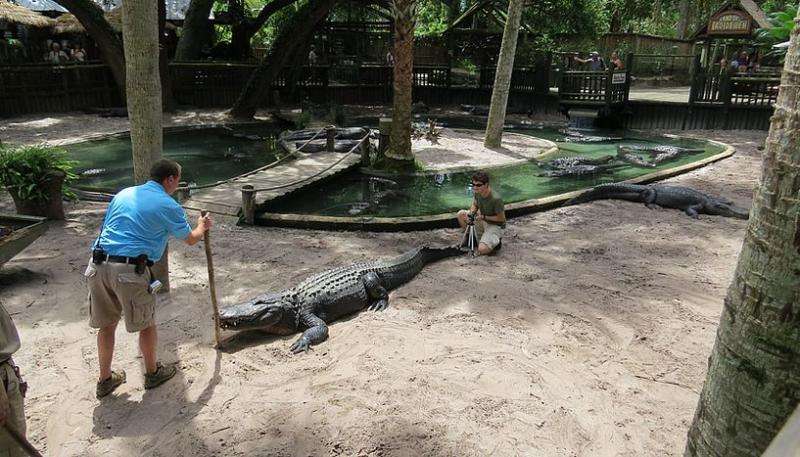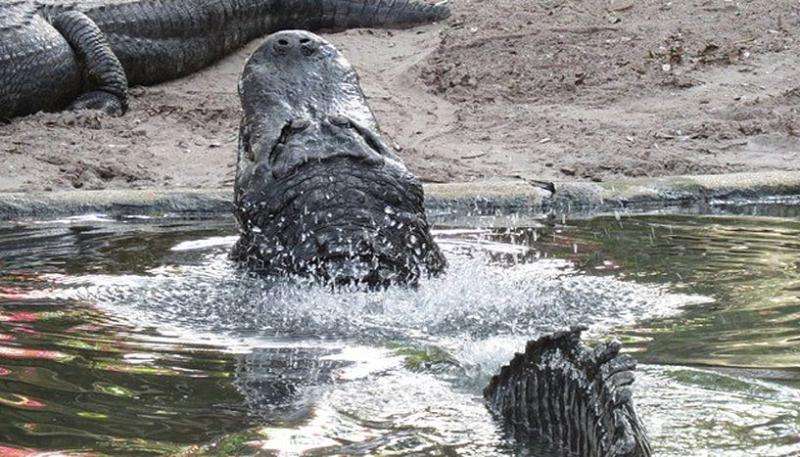In both love and war, alligators signal size by bellowing

American alligators produce loud, low-frequency vocalizations called "bellows." Cognitive biologists at the University of Vienna, Stephan Reber and Tecumseh Fitch, investigated these vocalizations and found that they reveal the caller's body size. Alligators can use this information to avoid unpromising contests for mates and breeding areas. The study results were published in Scientific Reports.
In alligators and other crocodilian species, being bigger than your conspecifics can have decisive benefits: Females only accept males larger than themselves as mates and larger alligators are much more likely to win territorial fights. However, direct physical confrontations can lead to lethal injuries so it would be advantageous if fights could be avoided by individuals reliably signalling their body size to potential mates and rivals early on. One way to achieve this is by "honest" acoustic cues to body size in vocalizations. A team around Tecumseh Fitch at the Department of Cognitive Biology at the University of Vienna has now identified cues to body size in calls of American alligators, which is the first finding of this kind in reptiles.
American alligators produce very low-pitched rumbling roars, so called "bellows," year-round and most frequently during mating season. Interestingly, the bellowing displays differ between the sexes, as study co-author Kent Vliet from the University of Florida had previously described: Only male alligators produce a "water dance," visible due to water droplets sprinkling over their backs, preceding the audible bellow.

For the current study, lead-author Stephan Reber and Judith Janisch of the University of Vienna recorded the bellows of 43 adult American alligators at the St. Augustine Alligator Farm Zoological Park in Florida. Then the curators of the institution, Kevin Torregrosa and Jim Darlington, together with the two researchers, measured the head and total body length of all the alligators up close with measuring tapes and hand-held laser-distance-measurement devices.
In a detailed acoustic analysis, Reber found that frequencies produced by vibrating tissue, such as the vocal folds, hardly correlate with size at all. However, the resonance frequencies are almost perfect predictors of body size. "Resonance frequencies depend on the length of the vocal tract. Larger alligators have longer vocal tracts and therefore lower resonances," Reber explains. Interestingly, this is the same biological pattern previously found by Fitch in several bird and most mammal species, including humans. It was so far unknown in reptiles.
Birds and crocodilians share a common ancestor with all extinct dinosaurs. "It is thus plausible that also dinosaurs communicated their body size to rivals and potential mates via vocal tract resonances," Reber concludes.
More information: Stephan A. Reber et al. Formants provide honest acoustic cues to body size in American alligators, Scientific Reports (2017). DOI: 10.1038/s41598-017-01948-1
Journal information: Scientific Reports
Provided by University of Vienna



















